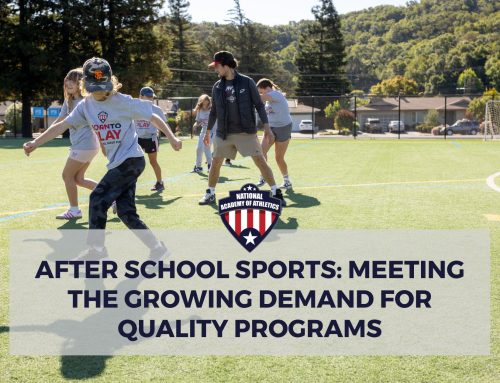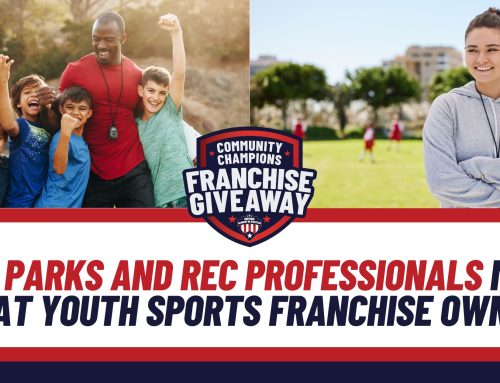The Price of Play: How Private Equity Is Undermining Youth Sports in America
Introduction
By Aaron Locks, Founder & CEO, National Academy of Athletics
Youth sports used to be about fun, teamwork, and community. Today, they’re a booming business. As corporations and private equity firms take over programs and facilities, they’re reshaping sports into pay-to-play systems that prioritize profits over participation.
Costs are rising. Access is shrinking. And the pressure on kids to specialize and succeed is pushing many out of the game. It’s time to step back and ask: Who is youth sports really for?
I’ve spent over 40 years working in youth athletics. I’ve seen what works and what doesn’t. True success comes from helping kids fall in love with movement, building their confidence, and making sure every child, regardless of background or skill, gets to play. The commercialization of youth sports risks losing all of that.
What’s at Stake
By Dr. Michael Herbert, Assistant Athletics Director for Community Partnerships, Cal Poly Humboldt
If we teach kids to love movement and play, they’ll stay active for life. But when sports become about profit, we start filtering out the very kids who need it most. Programs built around scholarships or elite performance create a false narrative: that athletic success only matters if it leads to a college or pro career.
This isn’t just a youth sports issue—it’s a public health issue. Fewer kids playing means fewer adults who stay active. It means more sedentary lifestyles, more mental health challenges, and fewer communities bonded through shared play.
We need to reframe how we measure success. It’s not about medals or championships—it’s about confidence, friendship, teamwork, and lifelong health. That only happens when we make youth sports accessible, inclusive, and joyful.
A Look Back
By Greg Coleman, Former Parks & Recreation Director, City of Napa
I worked in Parks and Rec for more than three decades, and I saw what community sports can do. We ran seasonal leagues that welcomed everyone. Volunteers coached. Games were local. Parents cheered from the sidelines. And kids played with joy, not pressure.
There were no matching uniforms or expensive travel tournaments. We focused on fun, fundamentals, and fair play. Kids played multiple sports throughout the year and didn’t specialize before they were ready. Those programs gave kids a place to belong, to grow, and to feel valued.
Now, I see families priced out of participation. Facilities booked by travel clubs. Kids are pushed too hard, too young. The balance is off. We’re losing the heart of what youth sports used to be.
The Real Difference: Community vs. Commercialized Sports
In community-based programs, every child gets to participate. These programs are typically affordable, seasonal, and focused on development, not just performance. Coaches are trained to nurture not just skills, but self-esteem and teamwork. These are environments where kids grow into strong, confident people, on and off the field.
On the other hand, corporate-run programs often charge high fees, run year-round, and focus on identifying elite talent. These systems can be exclusive and competitive, rewarding only the best while leaving many behind. Participation is often based on income, early talent, or specialization, not access or inclusion.
When the business of sports overshadows the joy of play, kids lose. So do families. And so does the future of community health.
What We Can Do: A Shared Call to Action
It’s not too late to change course. Here’s what we believe must happen:
-
Invest in community sports programs. Cities, recreation departments, and schools need support and funding to make these programs viable and strong again.
-
Redefine the purpose of youth sports. Not every kid is going to play in college or professionally, and they shouldn’t have to. Success should be measured by smiles, sportsmanship, and sustained participation.
-
Make access a priority. Keep programs seasonal. Encourage multi-sport play. Welcome beginners, late bloomers, and kids of all backgrounds.
As Erin Niemeyer, Recreation Manager for Redwood City, puts it:
“Inclusion isn’t optional, it’s essential to building stronger, healthier, more connected communities.”
The Bottom Line
By Aaron Locks
We’re at a critical point. We can continue down the path of commercialization, where youth sports become exclusive, expensive, and exhausting. Or we can return to what works: programs rooted in community, designed for all, and focused on the whole child.
Let’s get back to the basics. Let’s bring play back to every playground, every gym, and every field, without price tags, pressure, or exclusion. Kids deserve that chance. So do our communities.




